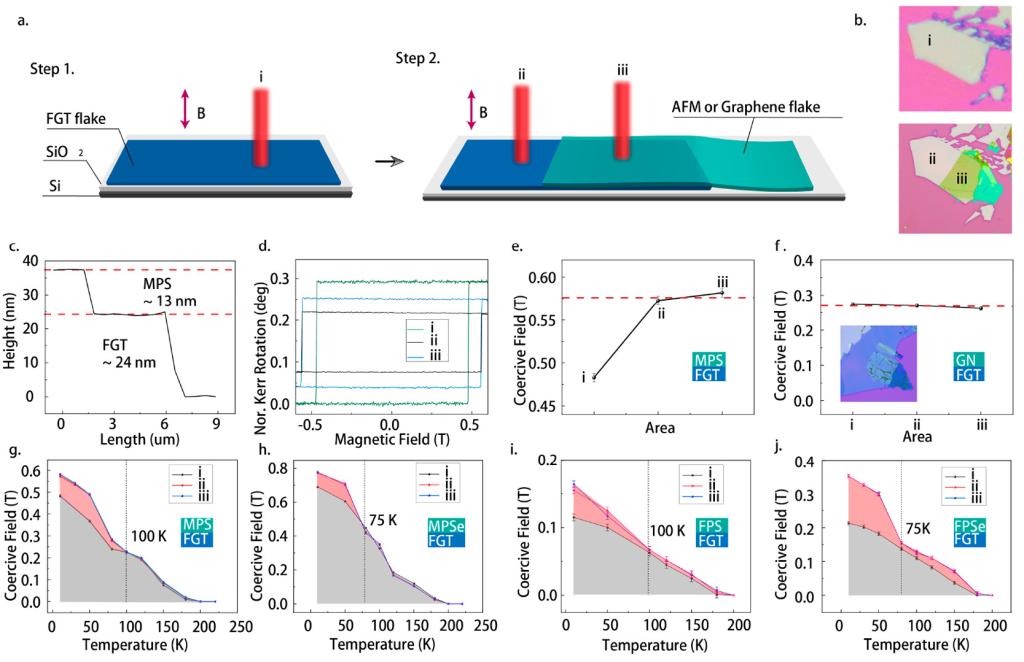
Figure 1. (a)Nonlocal manipulation of magnetism of FGT flakes by an AFM layer. (a) Diagram of experimental process. (b) Corresponding optical images of two steps. (c) Atomic force microscopy data of the FPS/FGT heterostructure. (d) Hysteresis loops of three areas obtained from the MPS/FGT sample shown in (a) and (b). (e) Coercive field of three areas. (f) Coercive field data of the control sample prepared using graphene and FGT. (g−j) Temperature dependent coercive field of three areas obtained from MPS/FGT, MPSe/FGT, FPS/FGT, and FPSe/FGT heterostructure samples, separately.
Background
Two-dimensional (2D) magnets are crucial in the construction of 2D magnetic and spintronic devices. Many devices, including spin valves and multiple tunneling junctions, have been developed by vertically stacking 2D magnets with other functional blocks. However, owing to limited local interactions at the interfaces, the device structures are typically extremely complex. To solve this problem, the non-local manipulation of magnetism may be a good solution. In this paper, a nonlocal magnetism manipulation method was performed on Fe3GeTe2 (FGT) and significant results have been obtained.
What is discovered?
We discovered that the coupling of a small piece of MnPS3 (~40 μm2) with FGT can significantly enhance the coercive field and emergence of exchange bias in the entire FGT flake (~2000 μm2). And FGT flakes with different thicknesses have the same coercive field at low temperatures if they are coupled together
What is important?
Our study provides a new understanding of the basic magnetism of 2D itinerant ferromagnets as well as opportunities for engineering magnetism with an additional degree of freedom.
Why did we need WHMFC?
MOKE is a powerful tool for investigation of 2D ferromagnetic materials. The lab-build MOKE setup in WHMFC provides a magnetic field of 0-2.5 T, temperature range of 4.2-300 K, and space resolution of 3 μm, and it played an important role in ferromagnetism characterizations in FGT and MPX/FGT (M=Fe, Mn; X=S, Se) in this work.
Who did the research?
H. Dai, M. Cai, Q. Hao, Y. Xing, H. Chen, X. Chen, Prof. J. B. Han*
Wuhan National High Magnetic Field Center and Department of Physics, Huazhong University of Science and Technology, Wuhan, 430074, China E-mail:junbo.han@mail.hust.edu.cn
Prof. X. Wang,
School of elementary education Wuhan City Polytechnic College Wuhan 430070, P. R. China
Q. B. Liu, Prof. H. H. Fu,
Department of Physics, Huazhong University of Science and Technology, Wuhan, 430074, China
Link
https://pubs.acs.org/doi/10.1021/acsnano.2c03626
